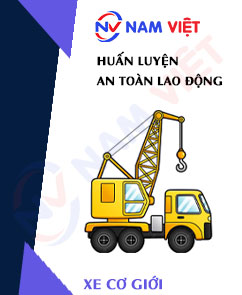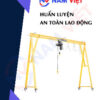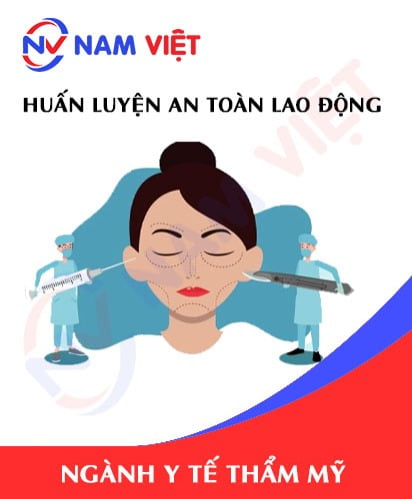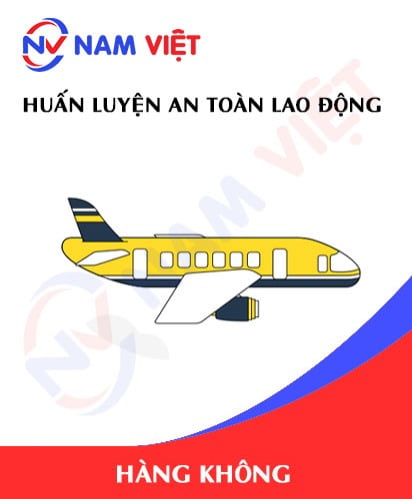Occupational Safety Training for Motor Vehicle Operation
99,000 ₫
Note: The above price is calculated for one person and may fluctuate depending on the number of course participants and market movements. For more accurate pricing support, please refer to the pricing table or contact our consulting staff directly.
Occupational safety is an important issue when operating motor vehicles and needs to be addressed promptly to ensure the health and safety of workers and enhance the reputation of businesses here. The Occupational Safety Training course is one of the effective solutions to raise awareness about accident prevention for workers operating motor vehicles.
Table of Contents
Toggle1. Overview of Motor Vehicles
a. What is a Motor Vehicle?
A motor vehicle is a type of transportation equipped with an engine and designed to move using energy from the engine, rather than human or animal labor. This type of vehicle is divided into various categories based on usage, structure, and features, such as cars, motorcycles, trucks, buses, excavators, and many others.
Motor vehicles can be used to transport people, goods, or perform specialized tasks depending on the type of vehicle and its intended purpose. Different types of engines are used in motor vehicles, including gasoline engines, diesel engines, electric engines, and others, depending on specific applications and performance requirements.

b. Applications of Motor Vehicles in Work
Motor vehicles have many applications across various work sectors due to their flexibility and efficiency. Here are some examples of motor vehicle applications in work:
- Personal transportation: Cars and motorcycles are used daily to transport people for work, study, and leisure purposes.
- Freight transportation: Trucks and other motor vehicles play an important role in transporting goods from factories to stores, distribution centers, and other retail points.
- Construction: Excavators, loaders, and other construction machinery are used for earthmoving, road construction, and building projects.
- Agriculture: In agriculture, motor vehicles like tractors, harvesters, and fertilizer mixers help improve productivity and efficiency in crop production.
- Firefighting and rescue: Fire trucks and ambulances are used for emergency response and traffic accident assistance.
- Waste collection: Garbage trucks are used to collect and dispose of waste.
- Specialized tasks: Specialized vehicles such as cranes, concrete mixers, and other specialized vehicles are used in industries like construction, mining, and various other applications.
- Industry and manufacturing: Forklifts, tow vehicles, and other motorized equipment are used to move and handle materials during production and loading/unloading operations.
- Public transportation services: Buses, subways, and other public transport vehicles ensure daily mobility for people to workplaces and other locations.
- Exploration and research: Space and underwater vehicles are used in exploration missions and research of the ocean floor and outer space.
Thus, motor vehicles play an important and diverse role in many aspects of modern life and work, contributing to societal development and convenience.
c. Standards for a Motor Vehicle Operator
To operate a motor vehicle safely and effectively, drivers must adhere to various standards and traffic regulations. Below are some key standards a motor vehicle operator must follow:
- Driver’s license: Operators must have a license appropriate for the type of vehicle they intend to operate. This license typically requires passing knowledge and driving skill tests.
- Compliance with traffic laws: Drivers must follow all local traffic rules and regulations, including speed limits, signaling, safe steering, and stopping at traffic lights.
- No driving under influence: Operators must not drive under the influence of substances such as alcohol, drugs, or tobacco. Compliance with laws on substance-free driving is crucial for safety.
- Vehicle maintenance: Operators must keep their vehicles in good working condition, including checking engine oil, tires, brakes, and other components to ensure safe driving.
- Use of safety equipment: Drivers must use safety equipment such as seat belts, helmets (for motorcycles), and child seats (for operators with children).
- Follow traffic signs and signals: Drivers must understand and comply with all traffic signs and road signals.
- Emotional control: Operators must remain calm and focused while driving, avoiding reckless or aggressive behavior.
- Knowledge of vehicle structure: Understanding how a vehicle operates helps drivers handle emergencies when needed.
- Driving skills: Possess safe driving skills, including vehicle control, parking, and performing necessary maneuvers.
- Respect for other road users: Operators should respect other vehicles and road users to reduce the risk of collisions and accidents.
2. Overview of Labor Safety Training for Motor Vehicle Operation
a. What is Labor Safety Training?
- Labor safety training for operating motor vehicles consists of sessions that equip workers with awareness on how to prevent occupational accidents. Accordingly, workers directly working with motor vehicles belong to group 3.
- Safety training helps workers identify and avoid hazards, reducing risks of occupational accidents during work.
REGISTER FOR LABOR SAFETY TRAINING SERVICE
b. Training Duration
Initial safety training duration
- Total training time is at least 24 hours, including testing time.
- 8 hours of theory on policies, safety laws, and occupational hygiene
- 8 hours of theory on basic safety and hygiene knowledge
- 4 hours of theory on specialized training content
- 2 hours of practical training on specialized content
- 2 hours of theory assessment at the end of the training
The safety training center will arrange sessions depending on the schedule of workers. Typically, there will be 6 sessions over 3 days, provided the enterprise can arrange continuous learning.
Periodic safety training duration
- Before the labor safety card expires, workers who want renewal must attend periodic safety training for at least 50% of the initial safety training duration.
Explanation: The total periodic labor safety training time is at least 12 hours, including testing. After completing the periodic course and passing the assessment, the worker will receive a renewed labor safety card.
c. Training Content
| No. | TRAINING CONTENT | TRAINING TIME (HOURS) | |||
| Total | Including | ||||
| Theory | Practical | Assessment | |||
| I | Policies and legislation on occupational safety and hygiene | 8 | 8 | 0 | 0 |
| 1 | Overview of legal documents on occupational safety and hygiene. | 6 | 6 | ||
| 2 | Standards and technical regulations on occupational safety and hygiene. | 1 | 1 | ||
| 3 | Specific regulations of state management agencies regarding safety and hygiene when constructing, expanding, or renovating facilities for production, usage, storage, and inspection of machines, equipment, materials, and substances with strict safety and hygiene requirements. | 1 | 1 | ||
| II | Basic knowledge on occupational safety and hygiene | 8 | 8 | 0 | 0 |
| 1 | Basic knowledge of hazards and harmful factors in the workplace. | 4 | 4 | ||
| 2 | Methods to improve working conditions. | 1 | 1 | ||
| 3 | Safety culture in production and business. | 1 | 1 | ||
| 4 | Rights and obligations of employers and employees; safety and hygiene policies for workers; functions and tasks of safety officers. | 1 | 1 | ||
| 5 | Safety regulations, signs, guidance signs, use of safety equipment and personal protective equipment; first aid skills for occupational accidents and prevention of occupational diseases. | 1 | 1 | ||
| III | Specialized training content | 6 | 4 | 2 | 0 |
| Comprehensive knowledge of machines, equipment, hazardous substances; risk analysis and management for safety and hygiene; safe working procedures with machines, equipment, and substances with strict safety requirements. | 6 | 4 | 2 | ||
| IV | Assessment at the end of training | 2 | 2 | 0 | 0 |
| Total | 24 | 22 | 2 | ||
See more training content of 6 groups
d. Labor Safety Card
After completing the labor safety training and passing the assessment, workers will be issued a labor safety card (commonly called group 3 labor safety certificate).
Group 3 safety cards include personal information such as name, date of birth, job, and specific working environment. They also indicate training duration, official seal, and signature confirming completion of training.
According to regulations in Clause 2 of Article 24 of Decree 44/2016/ND-CP, there are two cases:
- If the employer and employee have a labor contract, the employer must sign and stamp the safety card for the group 3 trainee after completing training from the authorized training unit and passing the assessment.
- If the worker is freelance or temporary with no labor contract, the training unit must sign and stamp the safety card for the worker after completing the training and passing the assessment.

3. Hazards When Operating Motor Vehicles
When operating motor vehicles, there are many hazards that can occur. Below are some common hazards that drivers need to face:
- Collisions and traffic accidents: This is the main hazard when driving. Collisions can occur with other vehicles or objects on the road. Traffic accidents can cause serious injuries and even fatalities.
- Unsafe driving: Unsafe driving includes speeding, performing unsafe maneuvers such as illegal U-turns, and not complying with traffic rules.
- Loss of vehicle control: Situations where the vehicle is out of control are serious hazards, which can occur due to loss of control on the road, tire slippage, or technical failures.
- Driving in bad weather conditions: Bad weather such as heavy rain, snow, fog, and storms increases the risk of traffic accidents and reduces vehicle control.
- Distraction and lack of focus: Using mobile phones, texting, or talking without hands-free devices can lead to distraction and accidents.
- Use of stimulants: The use of substances such as alcohol, drugs, or tobacco can reduce concentration, quick reactions, and decision-making ability of the driver.
- Lack of vehicle knowledge: Not understanding how the vehicle operates or not performing regular inspections and maintenance can lead to unexpected breakdowns and accidents.
- Disrespect and carelessness: Not respecting the right of way of other road users, failing to use turn signals, or ignoring traffic laws can cause accidents and conflicts.
- Fatigue and physical exhaustion: Driving while tired or physically weak can reduce focus and reaction time.
- Health-related loss of control: If a driver experiences a health issue while driving, such as loss of consciousness, accidents may occur.
4. Types of Work Accidents Caused by Motor Vehicles
Work accidents caused by motor vehicles can be very diverse, depending on the type of vehicle, the work environment, and the worker’s practices. Below are some common types of work accidents related to motor vehicles:
- Collisions with other vehicles: This common type of accident includes collisions between cars, motorcycles, trucks, or other industrial vehicles. Causes may include not following traffic rules, lack of focus, unsafe speed, or technical failures on the vehicle.
- Vehicle overturning: Motor vehicles such as trucks, excavators, and forklifts can overturn during operation, especially when working on difficult terrain or unstable ground.
- Falling from vehicles: Workers can fall from motor vehicles if safety is not ensured, such as not using seat belts or appropriate personal protective equipment.
- Being trapped or crushed by machinery: Machinery such as plows, stone crushers, or excavators can cause crushing or entrapment accidents if safety rules are not followed.
- Vehicle system or technical failures: Breakdowns or system failures in motor vehicles can lead to accidents, including brake failures, loss of vehicle control, or engine instability.
- Exposure to chemicals or hazardous materials: In work environments such as chemical industries or waste management, there is a risk of contact with toxic chemicals or hazardous materials.
- Hand and foot injuries: These can occur if workers do not follow safety rules when getting on/off vehicles or working around moving vehicle parts.
- Fire or explosion hazards: Motor vehicles can pose fire or explosion risks, especially when working near areas with oil, gas, or flammable substances.
- Noise and vibration hazards: Long-term work with motor vehicles can negatively affect workers’ health due to noise and vibration exposure.

5. Measures to Control Work Accidents When Operating Motor Vehicles
To control work accidents when operating motor vehicles, there are several important safety measures that drivers need to follow. Below are key measures to reduce risks and ensure safety while driving:
- Follow traffic rules: This includes obeying speed limits, using turn signals, stopping at traffic lights, and yielding appropriately. Basic traffic rules help reduce collision and accident risks.
- Avoid driving under the influence of stimulants: Never drive under the influence of alcohol, drugs, tobacco, or other stimulants. These reduce focus and reaction abilities, causing accidents.
- Use safety equipment: Ensure the use of seat belts, helmets (for motorcycles), and other personal protective equipment when necessary.
- Maintain vehicles in good condition: Regular maintenance and technical inspections ensure your vehicle operates safely and reliably.
- Focus on driving: Always concentrate on driving and traffic conditions. Avoid using mobile phones or performing other distracting activities while driving.
- Familiarize yourself with the vehicle: Understand how the motor vehicle operates and safety features such as brakes, turn signals, and steering systems.
- Drive safely in harsh weather conditions: When driving in bad weather like rain, snow, fog, or storms, reduce speed and increase vehicle distance to ensure safety.
- Respect right of way and traffic laws: Always respect other road users’ right of way and comply with traffic regulations.
- Control speed and maintain safe distance: Keep a safe distance from the vehicle in front to allow sufficient reaction time and control your speed.
- Master driving skills: Understand and apply safe driving skills properly, including parking, reversing, and turning.
- Driver training: Ensure all drivers in your organization or company are trained in basic safety and traffic rules.
- Rest adequately and avoid driving while tired: If you feel fatigued or physically weak, stop and rest before continuing your journey.
- Follow company operating rules: If you are a company driver, comply with company regulations regarding driving safety.
- Periodic vehicle inspection to detect safety issues such as mechanical wear or failures early, reducing the risk of work accidents.
6. Procedures for Handling Work Accidents Caused by Motor Vehicles
Work accidents caused by motor vehicles need to be handled promptly and correctly to minimize harm to people and property. Below are basic procedures for handling such accidents:
- Ensure safety: First, stop the vehicle immediately and turn on hazard lights to warn surrounding vehicles. Move away from dangerous areas such as areas at risk of fire or explosion.
- Provide first aid to the injured: If there are injured people, perform basic first aid such as controlling bleeding, CPR, or placing the injured in a safe position. Call emergency services immediately if necessary.
- Call for assistance: Notify emergency numbers such as the police (113), ambulance (115), and firefighting services (114) if needed. Provide accurate information about the accident’s location and situation.
- Protect the accident scene: Do not arbitrarily move vehicles or accident-related objects unless necessary to ensure safety. The accident scene is important for determining the cause and responsibility.
- Notify management or authorities: If the accident occurs at the workplace, immediately inform the supervisor or company management. In cases of serious accidents, contact authorities such as the police or the Department of Labor, Invalids, and Social Affairs.
- Document the accident: Record details such as time, location, cause, and the condition of the injured. Take photos if possible to serve the accident investigation process.
- Investigate and determine the cause: Authorities or the organization must investigate the cause of the accident, evaluate responsibilities, and propose preventive measures for the future.
- Support and compensation: Ensure the injured receive medical support and that legal compensation responsibilities are fulfilled according to labor and insurance regulations.
- Review and implement preventive measures: After handling the accident, the company or organization needs to review working procedures, retrain employees, and apply stronger safety measures to prevent recurrence.
7. Regulations on Training in Occupational Safety When Operating Motor Vehicles
Training in occupational safety when operating motor vehicles is a crucial requirement to ensure drivers and workers understand safety rules and can apply them in practice. Below are some key training regulations:
- Mandatory training: According to Vietnamese law and many international regulations, employees who operate motor vehicles must undergo safety training before starting work.
- Types of training: Safety training can include basic training for new workers, refresher training for experienced workers, and specialized training for those operating large or hazardous motor vehicles.
- Training content: Training courses usually cover knowledge of traffic rules, safe driving skills, vehicle maintenance, emergency response, and accident handling procedures.
- Trainers: Trainers must have occupational safety expertise and practical experience in operating motor vehicles.
- Testing and certification: After completing the training, workers must undergo tests to assess knowledge and skills. Those who pass will be issued safety training certificates.
- Training duration: Training time depends on the type of vehicle and job. For example, forklift and truck operators need more in-depth training compared to simple vehicles.
- Retraining: Workers must undergo periodic refresher training to update new knowledge and regulations, as well as review existing knowledge.
- Responsibility of the company: Employers are responsible for organizing and ensuring all employees receive adequate safety training. They must also ensure training records and certifications are maintained.
8. Penalties for Violations of Safety Regulations When Operating Motor Vehicles
Violations of occupational safety regulations when operating motor vehicles can lead to severe penalties, depending on the level of violation and consequences. Below are some common penalties:
- Administrative fines: Workers or businesses violating occupational safety regulations may be fined. The fine level depends on the severity and nature of the violation.
- Suspension of work: In cases of serious violations, employees may be suspended from work until they complete retraining and fully comply with safety regulations.
- Certificate revocation: Safety training certificates may be revoked if workers fail to comply with regulations or repeatedly violate safety rules.
- Disciplinary action at work: Employees may face disciplinary action from the company, such as reprimand, warning, suspension, or dismissal.
- Compensation liability: If an accident occurs due to a worker’s violation, that worker may be responsible for compensating for damages to property or people.
- Criminal liability: In cases where violations lead to serious accidents causing fatalities or major losses, violators may face criminal prosecution.
- Impact on businesses: Companies may face fines, suspension of business operations, or legal responsibility if they fail to comply with safety training and management regulations.
9. Rights of Employees When Participating in Safety Training for Motor Vehicle Operation
Employees participating in safety training for motor vehicle operation are entitled to the following rights:
- Right to access training: Employees have the right to be fully trained in occupational safety before performing tasks related to motor vehicles.
- Right to free training: According to regulations, the employer must pay training costs. Employees do not have to pay any training fees.
- Right to receive materials and instructions: Employees must be provided with training materials, detailed instructions, and guidance from experienced trainers.
- Right to certification: After completing the training and passing the test, employees will be granted a safety training certificate as a basis for working legally and safely.
- Right to refuse unsafe work: Employees have the right to refuse to operate motor vehicles if they have not yet received training or if working conditions are unsafe.
- Right to be updated with new knowledge: Employees have the right to participate in refresher or updated training to stay informed about the latest safety regulations and technologies.
- Right to raise opinions: Employees have the right to propose ideas or report unsafe issues to employers and trainers during the training process.
- Right to health protection: Training must ensure workers are equipped with knowledge and skills to protect themselves and others while working.
10. Benefits of Safety Training for Motor Vehicle Operation
Safety training for motor vehicle operation brings many practical benefits to both employees and businesses. Below are some outstanding benefits:
- Accident reduction: Safety training helps workers better understand risks and how to avoid them, reducing traffic and occupational accidents.
- Protecting workers’ health: Through training, workers learn how to protect themselves from hazards such as collisions, falls, and exposure to harmful substances.
- Improving driving skills: Training helps drivers enhance safe driving skills, improve reaction times, and handle emergencies more effectively.
- Increasing productivity and efficiency: With safety training, workers are more confident and efficient at work, reducing risks that cause downtime.
- Protecting company property: Proper vehicle operation reduces damage and wear, prolonging equipment lifespan.
- Legal compliance: Safety training ensures that companies and employees comply with occupational safety and health regulations.
- Creating a safe work culture: Safety training fosters a culture of responsibility and safety within the organization.
- Enhancing company reputation: Businesses that ensure safety and care for workers’ lives build a positive reputation with partners and customers.
11. Safety Training Services for Motor Vehicle Operation at Nam Viet Safety
Nam Viet Safety is a reputable unit specializing in providing occupational safety training services, including training for motor vehicle operation. We are committed to delivering high-quality courses that meet legal and practical requirements:
- Experienced trainers: Our team consists of trainers with in-depth knowledge and years of experience in occupational safety and motor vehicle operation.
- Up-to-date training content: Training programs are built based on the latest laws, regulations, and real-life situations.
- Modern training methods: Training combines theory with practice, using simulation and real-life scenarios to increase effectiveness.
- Flexible formats: Nam Viet provides both on-site and in-class training, suitable for businesses and individuals.
- Certificate issuance: After completing the training, students will receive a safety training certificate valid nationwide.
- Post-training support: Nam Viet supports students in consulting and answering questions even after completing the training.
- Competitive costs: Training services are reasonably priced and tailored to customers’ budgets.
1 review for Occupational Safety Training for Motor Vehicle Operation
No comments yet













phanminhhang341
Very good safety training service